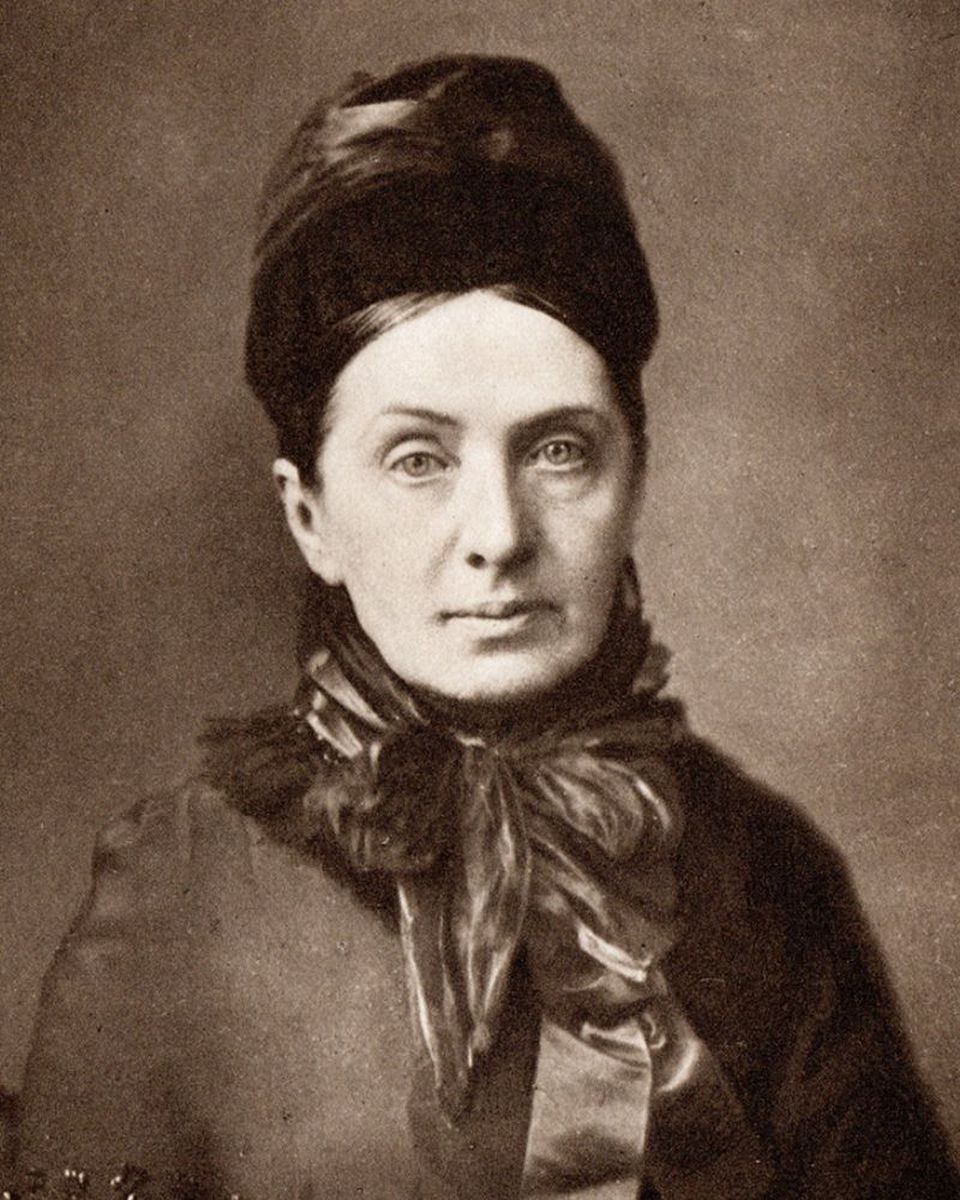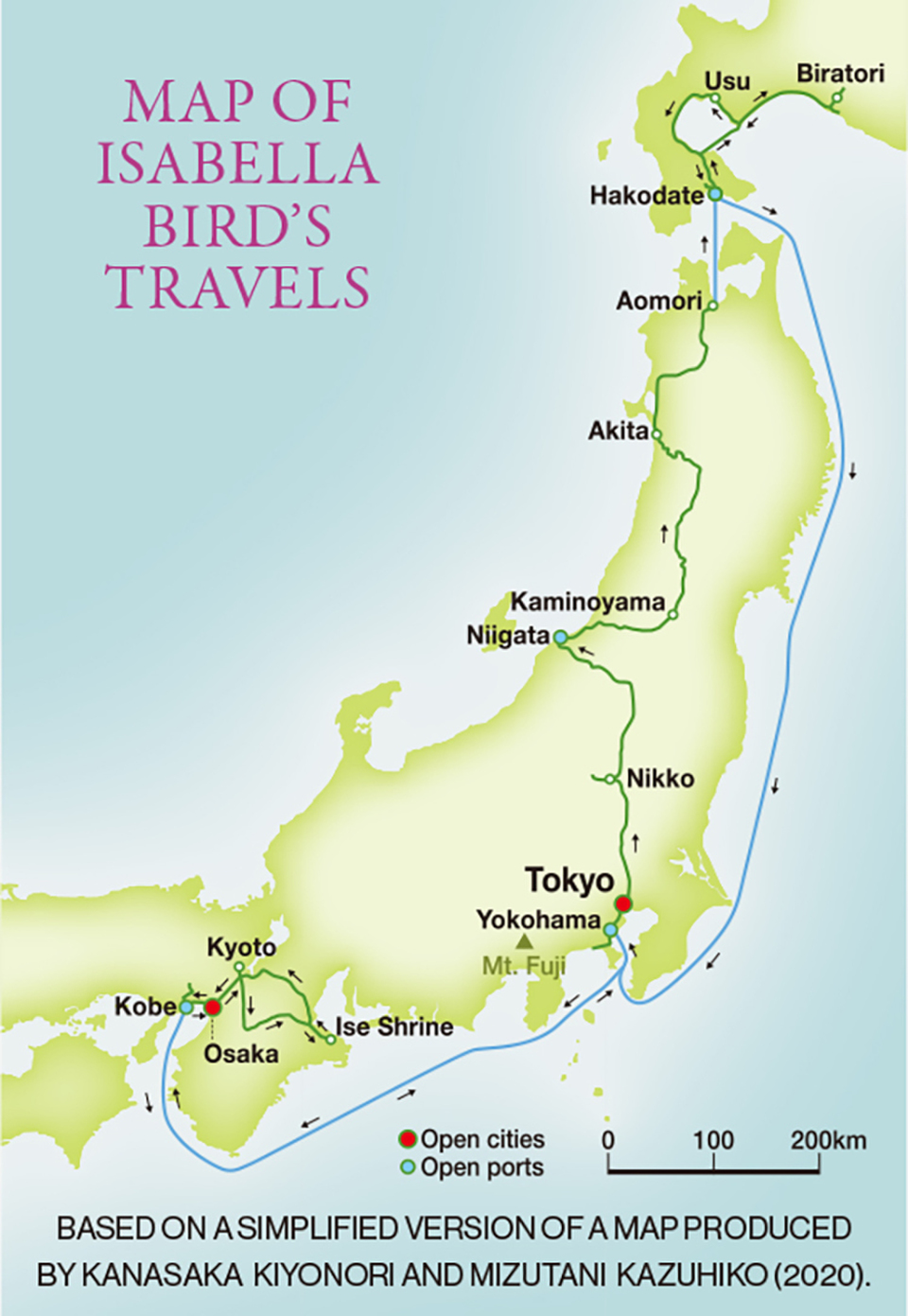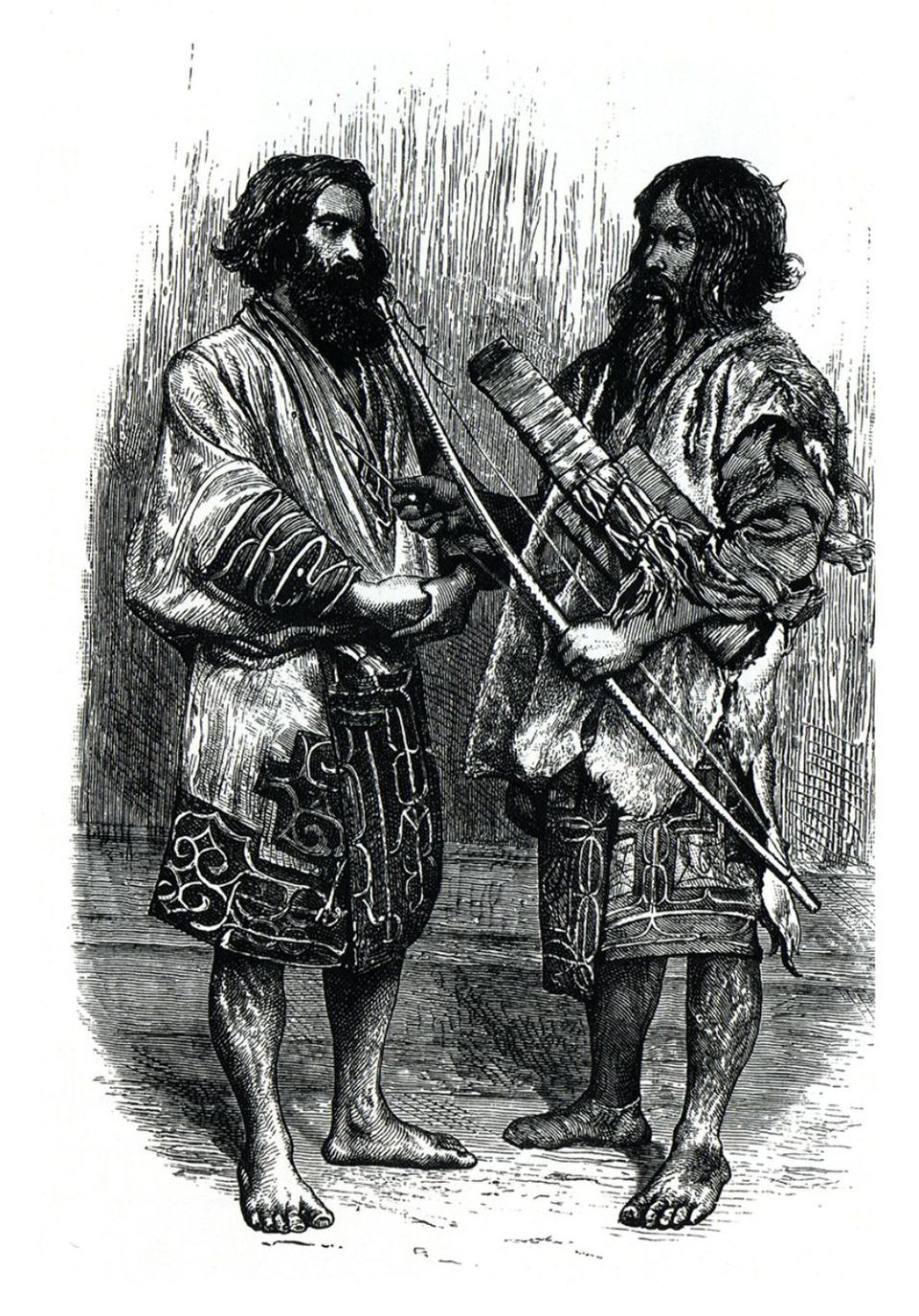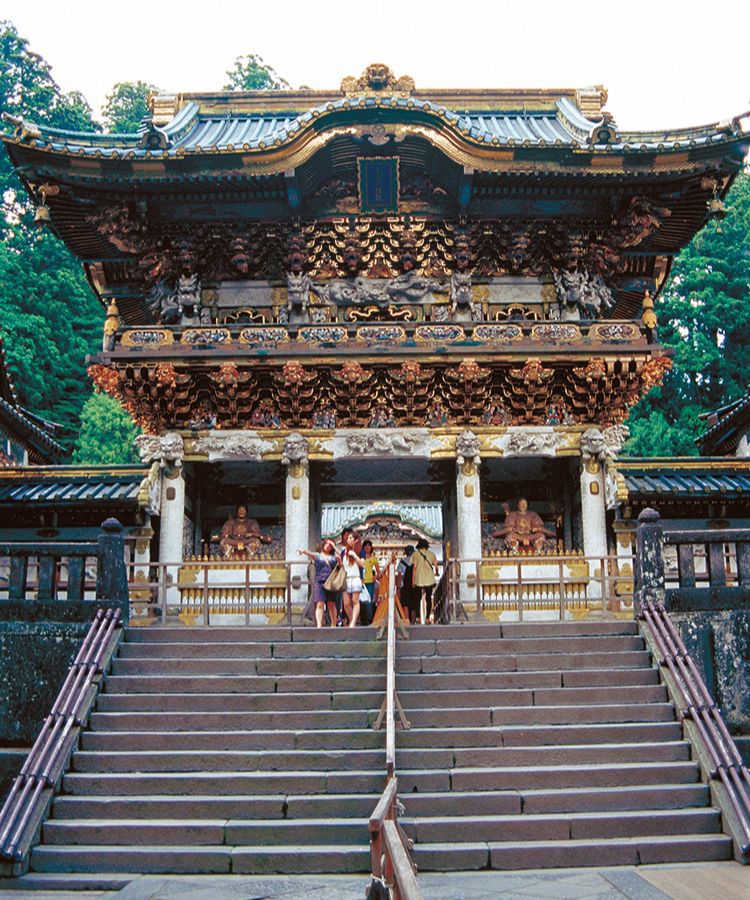The female English traveler Isabella Bird traveled Japan in the second half of the 19th century, penning a travelogue on the country’s hitherto unknown culture and natural features. What was the real Japan she observed and why does it enthrall the reader still to this day?

When she first visited Japan in 1878, Bird had already been celebrated for her travelogue of the Hawaiian Islands. By applying all her prior experience and her keen sense of duty, she successfully completed the arduous journey at a time when movement around Japan by foreign visitors was heavily restricted (Photo taken in 1881). KANASAKA KIYONORI

At the time, a special permit was required for foreigners to travel in the “interior,” the area beyond the 40 km radius of the two open cities and the five open ports (the four shown on the map plus Nagasaki).
Travel remains difficult as the COVID-19 pandemic continues, but the world of exploration and adventure can still be experienced via the pages of a travelogue. A high-quality travelogue offers the reader information about a land’s allure that is not available through daily news sources or regular guidebooks. Isabella Bird was a pioneer of such travelogues about Japan, having first visited from her home country of England in 1878.
At the time of this visit, Japan had already been exposed to the outside world for more than two decades (having ended its more than two-century policy of isolation in 1854), and Western culture was rapidly entering and transforming the country. In the “interior,” however, the culture had remained largely unchanged. In response to a request by the British consul-general in Japan, Harry Parkes, who wanted to show the world the real Japan, Bird embarked upon a roughly seven-month journey covering more than 4,500 km, traveling north from her base in Tokyo to Hokkaido, then west through the Kansai region to Ise Shrine. Her two-volume, 800-page travelogue, Unbeaten Tracks in Japan: An Account of Travels in the Interior Including Visits to the Aborigines of Yezo and the Shrines of Nikkō and Isé, was published in 1880, and is filled with invaluable stories from her traveling experiences.
Bird recorded extensive accounts of the indigenous Ainu settlements at Biratori in Hokkaido, one of the major Ainu centers, detailing everything from daily life to familial relationships and religious beliefs. Meanwhile, at Ise Shrine and at Nishi-Hongwanji Temple in Kyoto, she wrote in detail about the buildings’ interiors, which were known to very few people, even among the Japanese. “These special experiences were possible thanks to Parkes enlisting the support of the Japanese government and making thorough preparations,” says KANASAKA Kiyonori, professor emeritus at Kyoto University, who in 2020 published the highly acclaimed reprint Unbeaten Tracks in Japan: Revisiting Isabella Bird. Due to Bird’s visually illustrative portrayals formed from her keen powers of observation and her unparalleled meticulous accounts—often based on the research available at the time—her work still serves as a valuable resource for understanding what Japan was like in the late 19th century.

KANASAKA KIYONORI, ISABELLA BIRD AND JAPAN: A REASSESSMENT
“The long-fire lights up as magnificent a set of venerable heads as painter or sculptor would desire to see......I hope I shall never forget the music of their low, sweet voices, the soft light of their mild, brown eyes, and the wonderful sweetness of their smile.”
KANASAKA KIYONORI, ISABELLA BIRD AND JAPAN: A REASSESSMENT

KANASAKA KIYONORI, IN THE FOOTSTEPS OF ISABELLA BIRD: ADVENTURES IN TWIN TIME TRAVEL
“Usu is a dream of beauty and peace......In the exquisite inlet where I spent the night, trees and trailers drooped into the water and were mirrored in it, their green, heavy shadows lying sharp against the sunset gold and pink of the rest of the bay.”
KANASAKA KIYONORI, IN THE FOOTSTEPS OF ISABELLA BIRD: ADVENTURES IN TWIN TIME TRAVEL
Bird vividly described customs and cultural practices that she experienced through encounters on her travels. With the cooperation of locals, she had the rare opportunity to attend a wedding and a funeral and to have children show her traditional games. In her lively depictions of the various people she interacted with, Bird clearly presented Japanese values such as omotenashi (the spirit of hospitality) and Japanese politeness. In an account of her stay in Tenoko, Yamagata Prefecture, she wrote: “When the women of the house saw that I felt the heat they gracefully produced fans and fanned me for a whole hour. On asking the charge, they refused to make any, and would not receive anything......I told them truly that I should remember them as long as I remember Japan, and went on, much touched by their kindness.”
The appeal of Japan that Bird repeatedly described throughout her writings can be felt as strongly now as it could then, whether it be at the stately Nikko Toshogu Shrine or Hokkaido’s Usu Bay with its beautiful scenery. Professor Kanasaka says, “From nature to people, society, and culture, Bird richly depicted the distinctive and inherent qualities she perceived in her observations. That is the most captivating thing about her travelogue.” What better way to experience Japan from afar than to delve into Bird’s travel writings?

KANASAKA KIYONORI, IN THE FOOTSTEPS OF ISABELLA BIRD: ADVENTURES IN TWIN TIME TRAVEL
“From this court another flight of steps ascends to the Yomei gate, whose splendour I contemplated day after day with increasing astonishment. The white columns which support it have capitals formed of great red-throated heads of the mythical Kirin.”
KANASAKA KIYONORI, IN THE FOOTSTEPS OF ISABELLA BIRD: ADVENTURES IN TWIN TIME TRAVEL






























